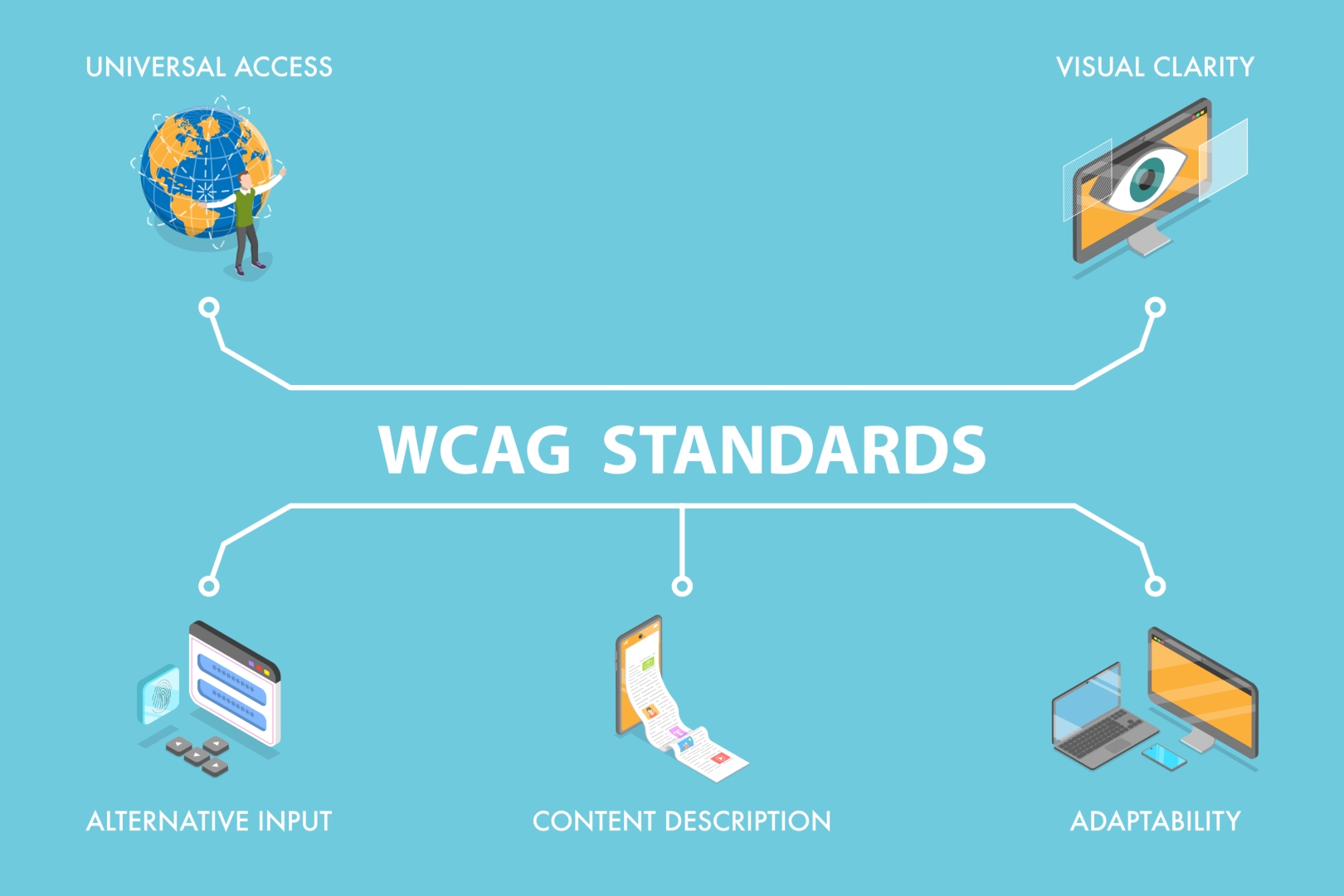In today’s digital landscape, website accessibility isn’t just a legal requirement—it’s a critical aspect of ensuring all visitors, regardless of ability, can easily navigate and interact with your online presence. An accessible website fosters inclusivity, expands your audience, and improves overall user experience. It’s a win-win for all parties! We’ll explain why website accessibility matters, the benefit to businesses who are compliant, and some tips on how to ensure your website is accessible to all.
Why website accessibility matters
Accessibility ensures people with disabilities—such as visual impairments, hearing loss, motor disabilities, or cognitive challenges—can equally access online information. Beyond being an ethical practice, website accessibility is often mandated by laws like the Americans with Disabilities Act (ADA) and Web Content Accessibility Guidelines (WCAG). While WCAG compliance is not explicitly mandated by the ADA, U.S. courts often reference WCAG as the standard for compliance in ADA-related cases. Therefore, following WCAG guidelines is often seen as the best way to ensure ADA compliance.
Benefits of an accessible website for businesses
Expanded Audience Reach
An accessible website opens your business to millions of potential customers with disabilities who may otherwise struggle to engage with your content.
Improved SEO Performance
Accessibility features often overlap with best SEO practices, such as clear navigation, descriptive links, Alt text for images, and structured content. This enhances your website’s ranking potential in search engines. When websites are designed with accessibility in mind, they naturally become more user-friendly and easier for search engines to crawl and index, potentially leading to higher rankings in search results.
Enhanced User Experience for Everyone
Accessibility improvements, like easy-to-read fonts, clear navigation, and logical content structure, benefit all users, not just those with disabilities.
Legal Compliance and Risk Reduction
Ensuring your website meets accessibility guidelines reduces the risk of costly legal actions and penalties related to non-compliance.
Practical tips to ensure your website is accessible
1. Provide Alternative Text for Images
Use descriptive alt-text on images to ensure screen readers can accurately convey visuals.
2. Ensure Keyboard Accessibility
Confirm your site can be navigated fully using a keyboard, facilitating use by those unable to operate a mouse.
3. Optimize Content Structure
Use clear headings, subheadings, bullet points, and numbered lists for logical, easy-to-follow content.
4. Select Accessible Fonts and Colors
Choose fonts that are easy to read, and use colors with strong contrasts to accommodate visually impaired users.
5. Include Video Captions and Transcripts
Provide closed captions for videos and transcripts for audio content to support users who are deaf or hard-of-hearing.
6. Test with Accessibility Tools
Regularly evaluate your website accessibility by using testing tools such as WAVE, AXE, or Google’s Lighthouse to identify and address issues.
7. Train Your Team
Educate your web developers, content creators, and designers about accessibility guidelines to ensure ongoing compliance and inclusive practices.
Don’t want to worry about keeping up with website accessibility guidelines? Leave it to the Oddballs!
As you can see, making your website accessible to all not only helps out those with disabilities but it can do a lot of powerful things for the reach and performance of your business’ website as well. By following these practical steps, your business can effectively reach and engage a broader audience, reflecting your commitment to equality and inclusivity in the digital world.
If you’re ready to make your website fully accessible but either aren’t confident in your ability to complete the above steps or if you just don’t have the time to deal with it, contact us today! We can help you achieve a fully inclusive and compliant digital presence while also helping you to stand out among your industry competitors.




